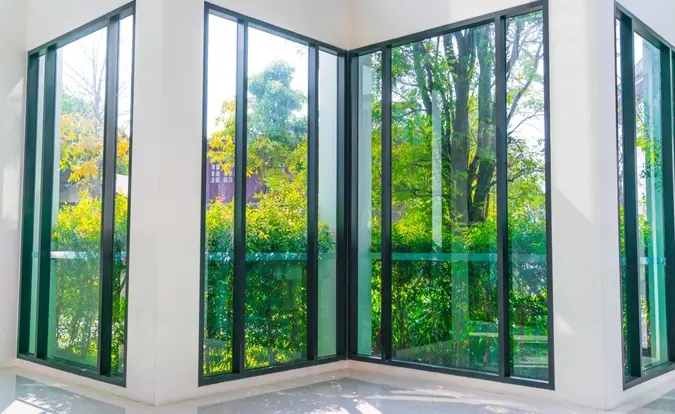If you’re considering window replacement, you’re likely encountering a world of unfamiliar terms. From sash to sill and everything in between, understanding the basic anatomy of a window can help you make informed decisions, communicate better with contractors, and feel more confident throughout the installation process.
In this guide, we break down the essential window components, what they do, and why they matter — especially when it comes time to replace those old, drafty panes.
Why You Should Understand Window Anatomy
Knowing how a window is constructed isn’t just for architects or installers. If you’re investing in window replacement, understanding the terminology can:
- Help you identify issues more clearly.
- Assist in choosing the right window style and features.
- Prevent confusion during consultations.
- Give you confidence when reviewing quotes or installation plans.
Let’s walk through the major parts of a window.
1. Frame
The frame is the outer structure that supports the entire window unit. It holds all other components together and is usually made of wood, vinyl, aluminum, or fiberglass.
- Head: The top horizontal part of the frame.
- Jambs: The vertical sides of the frame.
- Sill: The bottom part of the frame, often sloped to shed water.
When considering window replacement, the material of the frame is a major factor in both aesthetics and energy efficiency.
2. Sash
The sash is the part of the window that holds the glass. It can be fixed (immovable) or operable (movable) depending on the window type.
- Single-hung window: The bottom sash moves up and down, while the top sash remains stationary.
- Double-hung window: Both the top and bottom sashes move.
- Casement window: The sash swings open like a door, typically operated with a crank.
Well-constructed sashes are key to durability and smooth operation. If your current sashes are warped or sticking, it’s a strong sign you need window replacement.
3. Glazing (Glass Pane)
Glazing refers to the glass inside the window. While older windows often had a single pane, modern windows use double or triple glazing for better insulation.
- Single-pane: One layer of glass — outdated and energy inefficient.
- Double-pane: Two layers of glass with a gap filled with insulating gas (like argon or krypton).
- Triple-pane: Three layers for maximum energy performance.
When people invest in window replacement, upgrading the glazing is often a key reason — better insulation, reduced noise, and lower energy bills.
4. Grilles (Muntins or Mullions)
Grilles are the decorative bars that divide the glass into smaller panes. While traditional windows used multiple small panes separated by muntins, modern windows often use grilles between the glass (GBG) for a cleaner look and easier maintenance.
There are different styles:
- Colonial
- Prairie
- Farmhouse
- Custom
Grilles can add charm and character, but they’re mostly cosmetic — you can choose windows with or without them during a window replacement.
5. Hardware
This includes all the functional parts that allow the window to open, close, or lock.
- Locks: For security and keeping the window tightly sealed.
- Latches: Allow the sash to open or stay in place.
- Cranks: Common in casement windows.
- Lift handles: Found on the bottom rail for easy sash movement.
Replacing your windows means you get access to updated, smoother, and more secure hardware, which is a huge bonus.
6. Weatherstripping
A crucial component for energy efficiency, weatherstripping seals the edges of the sash to the frame to prevent air and water infiltration.
If you feel drafts or your energy bills are creeping up, poor weatherstripping might be to blame — and another reason to look into window replacement.
7. Balance System (for Hung Windows)
Inside the window frame, balance systems help counterbalance the weight of the sash, making it easier to open and close the window. If your window won’t stay open or slams shut, this system may be failing.
Modern window replacements typically come with improved balance systems for smoother operation and increased safety.
8. Spacer
In double- or triple-pane windows, spacers are the small components between the panes of glass that keep them apart and help insulate the window. Good quality spacers reduce heat transfer and prevent condensation.
During window replacement, choosing windows with warm-edge spacers can significantly improve energy efficiency.
9. Cladding
On some windows, particularly wood-frame models, cladding refers to an exterior layer of aluminum or vinyl that protects the wood from the elements. This means less maintenance for the homeowner.
If you’re replacing old wooden windows, cladded models offer the beauty of wood inside with weather-resistant exteriors — the best of both worlds.
10. Screens
Almost every operable window comes with a screen, which allows you to open the window without letting in bugs and debris. Some modern window systems offer retractable or removable screens that are easier to clean and more durable.
Bringing It All Together
When planning your window replacement, understanding these basic window parts helps you:
- Evaluate the condition of your current windows.
- Ask the right questions during consultations.
- Compare product options more effectively.
- Choose the right design, operation style, and energy features for your home.
Even though most homeowners don’t think about the anatomy of their windows on a daily basis, every piece — from sash to spacer — plays a vital role in how your windows perform.
Window replacement is a big investment, but it’s one that offers substantial returns in comfort, energy savings, and home value. Now that you know the key terms and components, you’re better equipped to choose windows that suit your style, your budget, and your lifestyle.
If you’re not sure where to begin, reach out to a local window replacement expert. A good contractor will walk you through your options, explain everything clearly, and help you make the right choice for your home.
Also Read-Hegel’s Harmonies: Elevating Home Audio Systems


